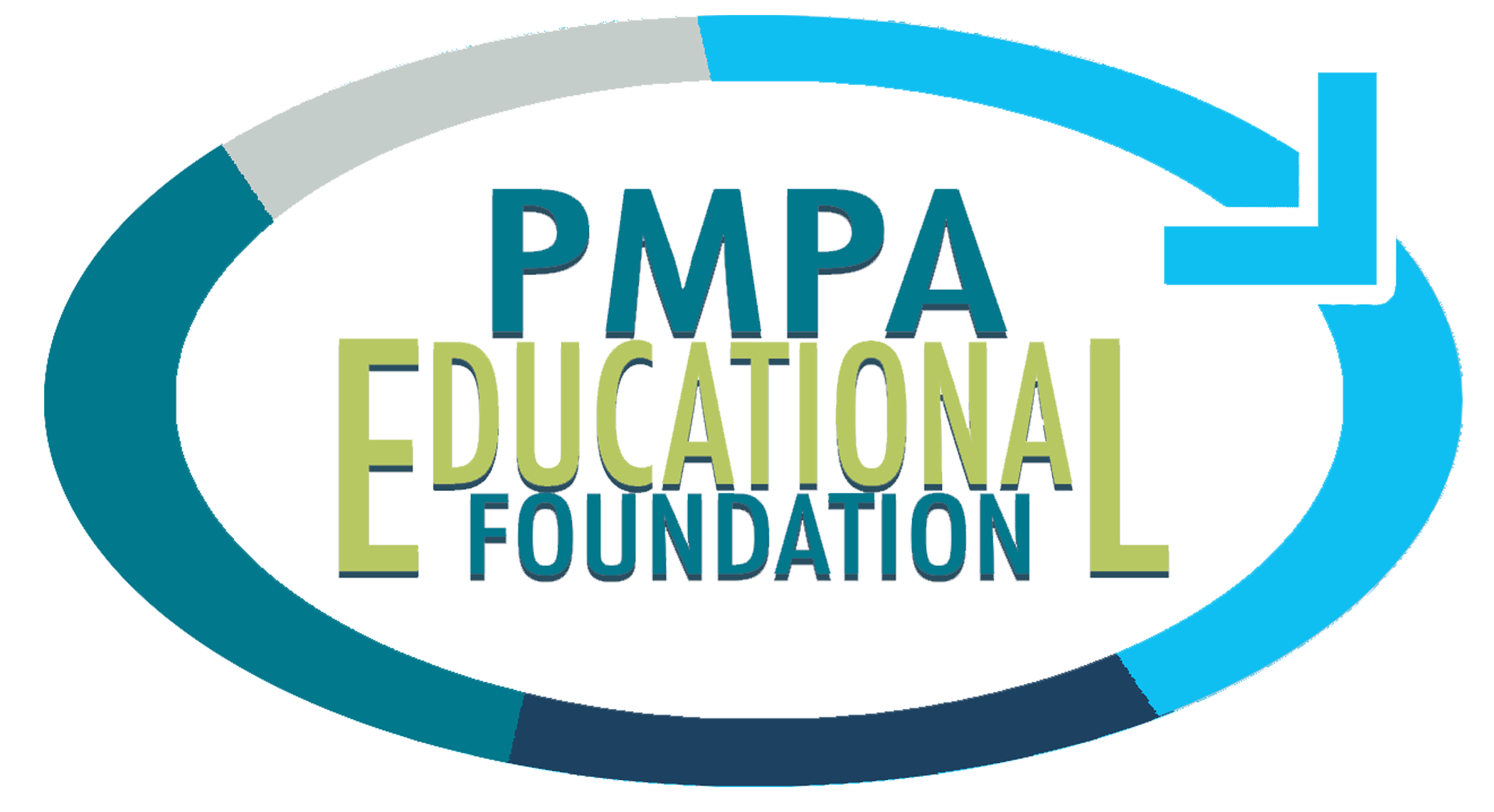Start your session with a brief overview of the many career opportunities and pathways to training! Students will then be able to meet industry professionals and see the latest tech up close.
Celebrate 90 years of PMPA excellence by being a part of the “90 for 90” campaign. Make a tax-deductible contribution of $90, $270, $540, or other multiple. Every donation will help us achieve our goals and continue our legacy of positive impact.
Student Day 2023 at Huntington Convention Center

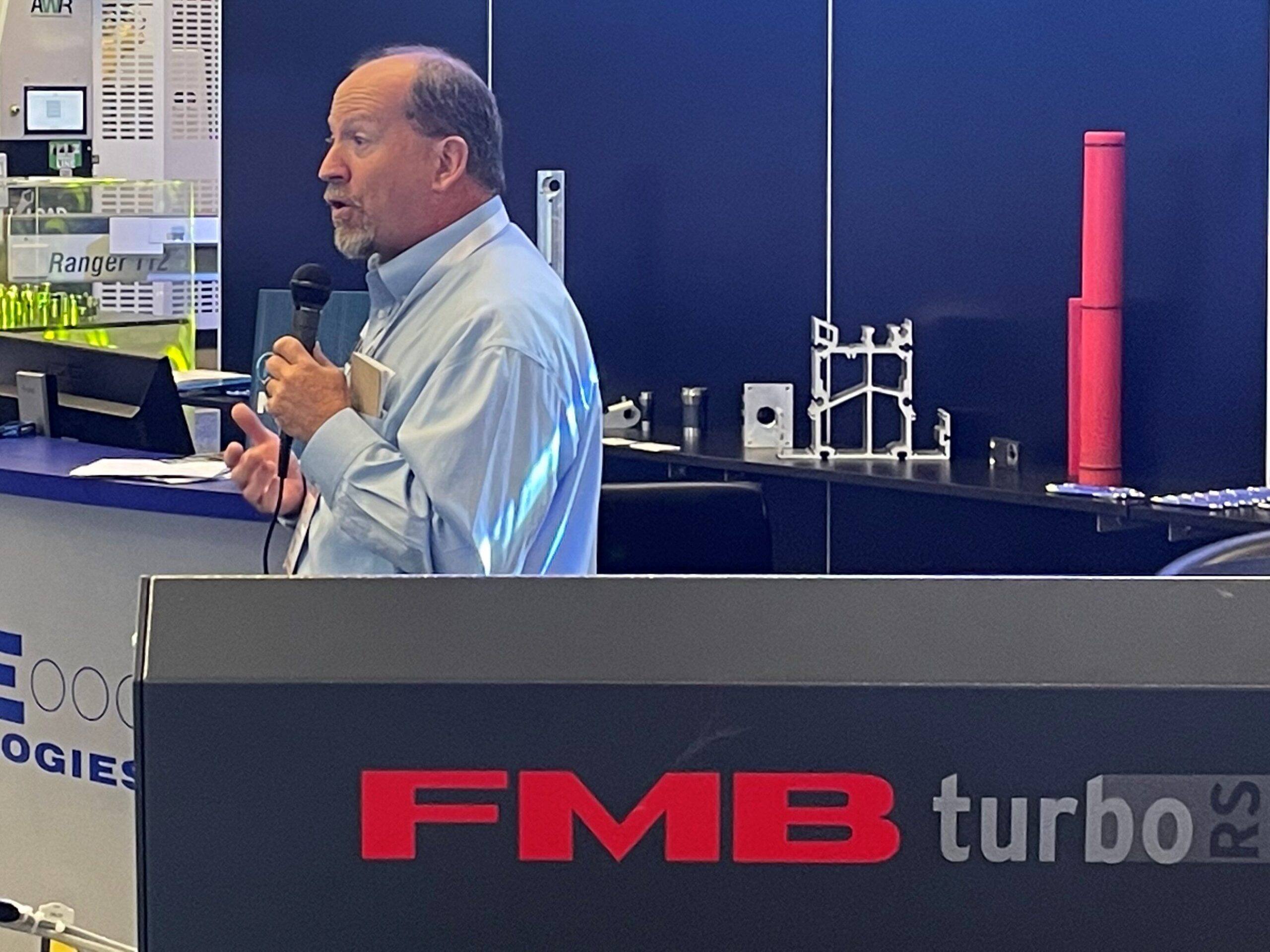
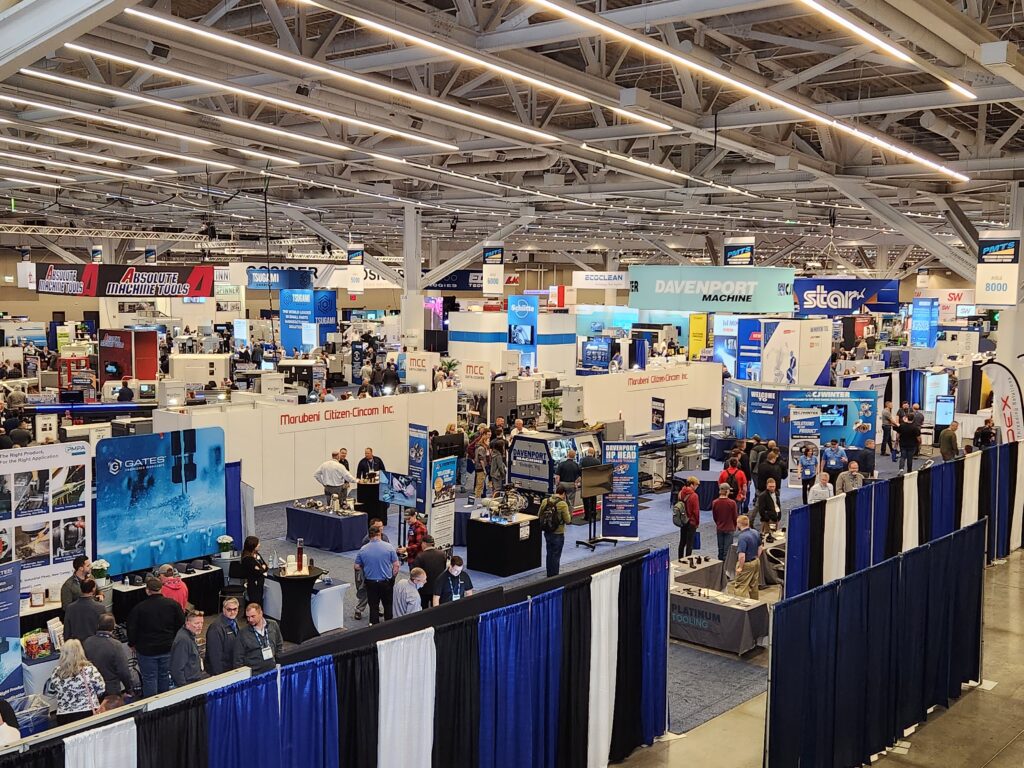
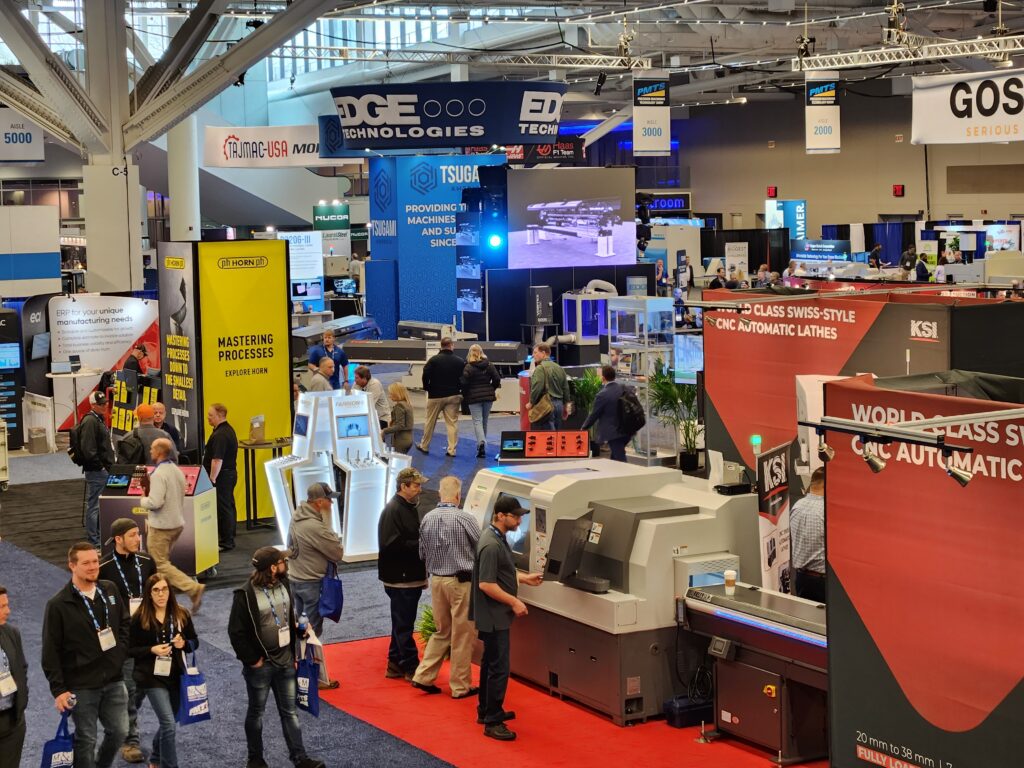
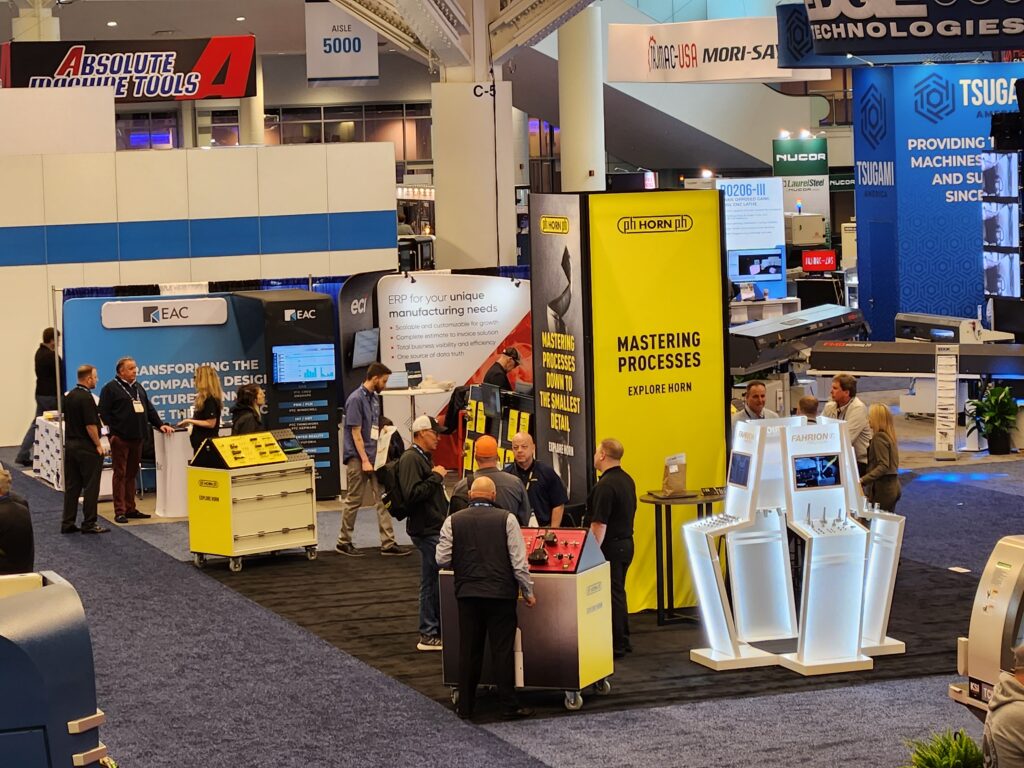
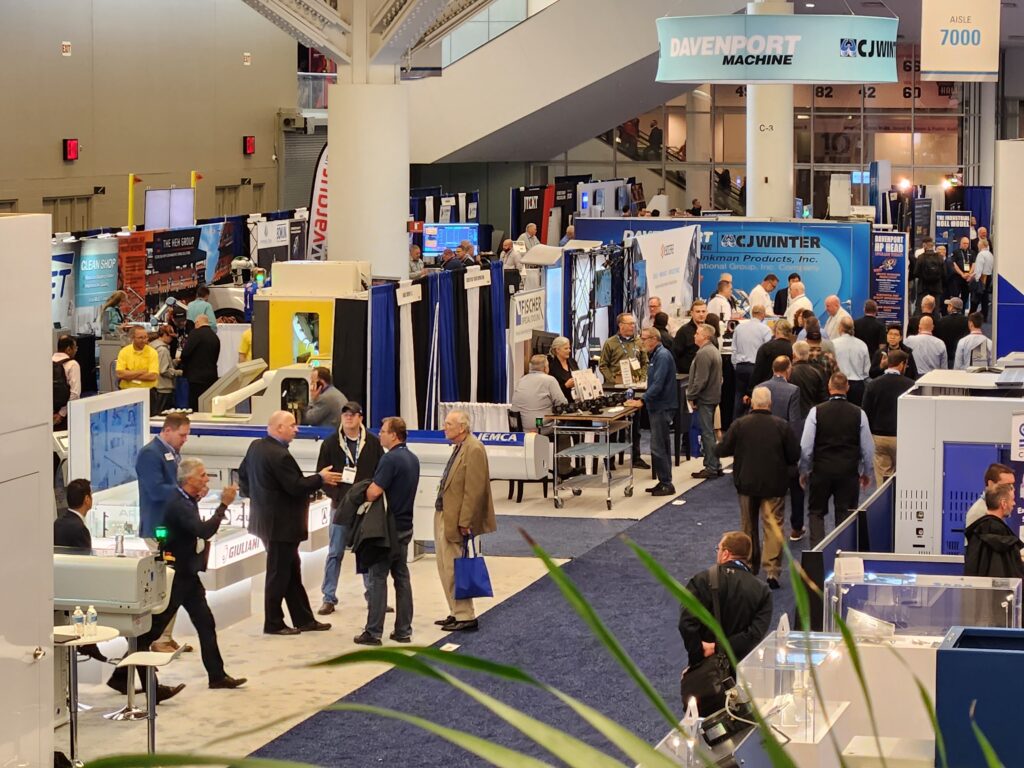
You’ll be able to see exhibitors showcasing the many different kinds of machines and materials that you could work with within this industry!
For Example: The machine in the image above is called the “FMB turbo 3-38 Bar Feeder” from Edge Technologies during PMTS and Student Day.
Below are a couple of short videos to show you what to expect from Student Day.
Other jobs in the industry:
Want to know more about Student Day? Click the “Contact Us” button below for more information.
Next Student Day: April 3, 2025
Student Day Glossary
- CMM (COORDINATE MEASURING MACHINE): CNC controlled machine used for measuring shapes and dimensions on components, commonly used in precision CNC Swiss machine shops.
- CNC (Computer Numerically Controlled): Using the aid of a computer to control and monitor the movements of a machine that was previously run by hand. The machine can have several axes of movements, in either a linear or rotary axis.
- CNC Machining: Computer run machining process that removes metal or plastic from bar stock to create a desired shape. It can be used to create a variety of complex shapes with tight tolerances.
- CNC Milling: Milling machine that is run by a computer program. Milling machines use rotary cutters to remove material. Learn more about the difference between milling and turning on our blog post, “Turning vs Milling: What’s the Difference for precision machining?”
- CNC Turning: Similar to a lathe, a computer-controlled machining center that removes metal or plastic from round bar stock. Typically, does turning, boring, drilling and threading. Learn more about CNC Turning.
- Cobot: A computer-controlled robotic device designed to assist a person. Also known as a collaborative robot.
- Collet: A split sleeve work holding device that secures a single size workpiece during machining-turning, drilling, milling, or grinding.
- Computer Aided Design (CAD): Computer software to aid engineers in the drafting, modification, and optimization of a part.
- Cutting Oil: A petroleum-based fluid used to lubricate the tool work interface, remove heat, and prevent built up edge while promoting chip removal and preventing rust on steel parts .
- Cycle Time: The total time it takes to produce one part on a machine.
- Deburring: The process of removing burrs (small, ragged edges/pieces of material creating during the machining process). Deburring processes can be manual, with streams of compressed air or fluids, or rolling the work in a barrel with abrasive media in a fluid. Thermal and electrochemical means can also be employed.
- Depth Gage: Device used to measure hole or recess depth.
- Diameter: The measurement of the maximum dimension of a round section through the center of the shape.
- Die: A tool, typically with a cavity of specific geometry used to create a specific shape reflective of the shape of the tool itself.
- Feed Rate: The rate at which the cutting tool or grinding wheel advance into or along the workpiece.
- Feed: The act of moving the material relative to the machine cutter. In precision CNC Swiss machine shops, feeding is usually accomplished using automotive bar loading equipment to achieve high efficiencies.
- Ferrous: Any metal alloy that has iron as its major ingredient.
- First Article Inspection (FAI): A formal reporting process that provides documentation that all measurements from a component design have been verified after production.
- Gage: A device for measuring or checking dimensions on a component.
- Grinding: Abrasive removal of material with a powered wheel to obtain improved surface finish or tighter dimensional tolerance.
- Hardening: Increasing hardness and tensile strength by suitable means that can include cold work, Heating, or cooling processes.
- Hardness: The resistance of a material to penetration, measured by one of the following hardness tests: Brinell, Knoop, Mohs, Rockwell, or Vickers. Directly related to tensile strength.
- Honing: A low-speed process of finishing a ground surface to a high degree of smoothness and accuracy. Uses abrasive blocks with controlled pressure and rotary or reciprocating motion.
- IIoT (Industrial Internet of Things): An evolution of devices that are interconnected with computers’ applications. This integration allows for data collection, exchange, and analysis, and potential improvements in overall process.
- Insert: A component that is used to join two objects together.
- ISO 9001:2015 (International Organization of Standards): A standard that sets out the requirements for a quality management system. It is designed to improve quality and efficiency to improve customer satisfaction. A current version of the standard, ISO 9001:2015 replaced the previous version (ISO 9001:2008).
- Knurl: A decorative or gripping surface of a component made by creating uniformly impressed design into the material as a result of pressing hardened rolls into the material. Sometimes cut rather than rolled. Knurls can be straight, diamond cylindrical or other geometries.
- Lathe: A machine for shaping metal or plastic material by rotating bar stock and using fixed cutting tools to create the desired geometry. Components made on lathes are also called turned components or Turned parts.
- Lead In/Lead Out: How a CNC program approaches and/or leaves the part before cutting. Typically, this is programmed through CAM software.
- Milling: Using a rotary cutter with one or more cutting elements which engage the workpiece, removing material as the tool and material move relative to the other. Typically used to create geometries of flat surfaces.
- Non-Ferrous: Metal that contains no iron (such as brass or aluminum).
- Operator: Or machinist, implements the plans created by a CNC programmer to run a computer-numeric controlled machine. This also may include changing out tools as indicated by the program and overseeing cycle time as well as making designated quality measurements and tests.
- Pilot Hole: A small hole drilled as a guide for a larger hole.
- Pitch: The axial distance between threads, which will be equal to the lead in a single start screw.
- Plating: Process of depositing an adherent layer of a different metal on a component. Plating offers many potential benefits including improved appearance, corrosion resistance, solderability, paint adhesion, wearability. It can also alter surface hardness, conductivity, and reduce friction. Nickel, zinc, and chrome plating are among the most common used for machined parts.
- Precision Machining: The process of machining tight tolerance, complex shapes from metal and plastic bar stock as well as forgings, castings, or cold headed blanks. These parts are often human safety critical and employed in applications where failure is not an option.
- Print: The human readable output of an electronic file that contains the information traditionally conveyed by blueprints or drawings that define what dimensions and geometric relationships required for a compliant part.
- Rockwell Scale: Test methods to compare material hardness based on indentation hardness of a material under specified load and indenters. Several Rockwell Hardness methods and scales cover various ranges of material hardness values.
- Screw Machine: An automatic lathe that will run production parts with minimal human intervention throughout the production run. Screw machines can be single or multi-spindle and will run small and medium size parts in medium and high volumes. A screw machine is used to make bolts, fittings, couplings, hose fittings, shafts, screws, and pins, as well as a wide variety of other types of fasteners and components.
- Spindle: The rotating torque providing part of a machine which may hold the bar or workpiece, or the tool or grinding wheel doing the work, depending on type of machine. A multi spindle machine can do machining operations on multiple pieces at the same time, thus reducing cost per piece, due to reduced cycle time from the parallel processing.
- Stainless Steel: Steels in this category of steel have had chromium, nickel and perhaps other elements added to prevent corrosion. The added chromium provides a more lustrous finish and makes the parts more suitable for food service medical, dental, and other critical applications. Stainless steels are considered more difficult to machine.
- Steel: An iron-based alloy, malleable in some temperature ranges as initially cast, containing Carbon, Manganese, and other chemical elements. It can be produced from molten iron in a basic Oxygen furnace supplied by a blast furnace using Iron Ore, limestone and Coke made from coal as initial feedstock, or , more commonly in the USA, made from recycled preexisting scrap steel in an electric furnace. Steel is initially solidified in to blooms or billets from a continuous caster, which are then rolled into bars for subsequent processing prior to machining. There are over one thousand variations of steel in four basic categories (carbon steel, alloy steel, stainless steel, and tool steel).
- Surface Finish: The measure of the overall texture of a surface that is characterized by the lay, surface roughness, and waviness of the surface of the workpiece, usually described in units of micro inches.
- Swiss Screw Machining: (Also known as Swiss lathes, or Swiss automatic lathe). The holding mechanism (collet) for the bar stock is recessed behind the guide bushing. This offers additional support to the material as it is being machined providing better tolerances for the finishing operations. These are also particularly effective at turning small diameter parts. The name Swiss screw machine comes from the fact that the first types of these machines were created in Switzerland. Adding CNC to the Swiss screw machines came about in the 1990s.
- Tapping: The process of cutting screw threads inside of a hole by using a tool with one or more cutting elements arranged such as to generate the desired thread size and form on the periphery as the tool moves both axially into the part and radially inside the hole.
- Tensile Strength: (TS) The property of a metal which resists force applied to pull it apart. It is the ratio of maximum load applied to the original cross-sectional area. It is also called Ultimate Tensile Strength (UTS) relating to the ultimate load it withstood while remaining in one piece. Typical US units are KSI or thousands (Kilo) of pounds per square inch.
- Thread Gage: Device used to measure the threads on a machined component.
- Thread Rolling: A secondary finishing process that produces a screw thread by passing the material through a set of hardened dies under great pressure to move it to conform with the geometry of the rolls. Thread rolling can be employed on the machine tool and can be performed as a secondary finishing process.
- Tolerance: The allowable amount that the finished component can differ from the original specified dimensions or relative location. Usually expressed at +/- a certain number of thousandths of an inch on parts, often specified as + .000/- .00X” on cold drawn steel bars.
- Torque: The rotational force (or turning force) a spindle drive motor generates to ensure cutting action when the workpiece material and tool engage.
- Turning: Machining process that rotates a workpiece material against a cutting tool in a lathe to create desired geometry, dimensions, and features about a central axis.
- Workholding: Any implement that is used to hold a workpiece in place while it is being machined. Examples include collets, three jaw chucks, four jaw chucks. In milling pallets, tombstones, and multiple collets fixturing can be used to hold single or multiple parts for machining.
